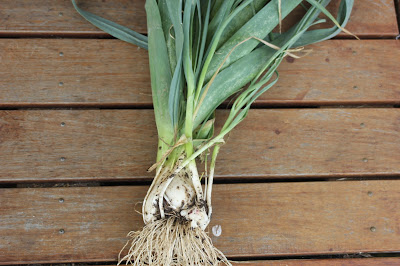Most people who grow coriander to harvest leaves (the Americans call the leaves 'cilantro') complain that they bolt too easily. It often feels like any stress from transplant shock, or hot weather, or a change in the weather, or under watering, or over watering, or even looking at them wrong makes them stop growing leaves and start flowering. Buying so-called ‘slow bolt’ varieties often makes no noticeable difference as these varieties have been grown by the seed company and no selective pressure has been placed on them for reluctance to flower.
Most
people adopt one of two responses to this issue, they either stop
growing coriander as it is too difficult/low yielding, or they save seed
from the best plants each year and add selective pressure for slow
bolting plants. These are both valid and sensible responses.
Recently I
read a paper written by an overseas seed research facility that said
“Selection is the most common breeding procedure used in coriander and
crossing is non-existent”.
I encourage people to add deliberate selective pressure when saving seeds, I certainly do this myself. Common sense tells you that if you plant seed of the slower bolting plants (and cull the early flowering ones) then the next generation will be slower bolting. The main issue with adding selective pressure coriander is that you are working with a small inbred population of plants that have very little diversity in their genetic makeup, so progress is made but it is slow progress. To really create slow bolting coriander crossing different varieties is essential. So that is what I have done.
I encourage people to add deliberate selective pressure when saving seeds, I certainly do this myself. Common sense tells you that if you plant seed of the slower bolting plants (and cull the early flowering ones) then the next generation will be slower bolting. The main issue with adding selective pressure coriander is that you are working with a small inbred population of plants that have very little diversity in their genetic makeup, so progress is made but it is slow progress. To really create slow bolting coriander crossing different varieties is essential. So that is what I have done.
 |
| Coriander mass cross, I had another bed of these behind and another one next to this to ensure every variety would cross with every variety |
 |
| Coriander mass cross, even this tiny some are already flowering due to the heat |
I did three staggered plantings of several seeds from all the varieties to ensure that each variety will flower and cross with each other variety. It seems strange to be allowing coriander to flower, and not to be culling, but this is only the start. Every year from now there will be culling, as well as back crossing to the previous year seeds.
If I cull hard each year I should be able to create a new variety or landrace of coriander that performs far better in this climate. While I feel bad that once these have crossed I have no way to get these varieties back, which means that many of these varieties may well go extinct, the end result should be superior to anything I currently have access to. I only have small numbers of seed of the original varieties left, but if you are a seed saver group and want a few seeds from the original strains and want to keep them pure please let me know before it is too late.
I have been
harvesting the leaves even from substandard plants, so I am no worse
off than just growing all of the different varieties and keeping them
pure, and I should never end up with something as bad as I
started with. This first year I have allowed all of the varieties to flower and cross, I have even done a second planting of all the varieties to increase chances of crossing all the different varieties with each other.
After this first year, when the lower quality plants begin to bolt they will be
culled and not allowed to flower, so each generation the genepool
becomes superior to the previous one.
 |
| Coriander |
When breeding it is important to know what to cull for, to make some culling rules, and to strictly follow those rules. I plan to cull for firstly amount/size of leaves as that is what I want to harvest from the plants, there is no use having plants that take forever to flower if they don't produce many leaves. Then I will select for reluctance to bolt as the yield is reduced if they stress and flower too easily. Then I will select for number of seed produced, then large size of seeds.
I want to end up with plants that produce lots of leaves and are simple to grow and save seed from each year. Producing many seeds means I can produce many plants, and large seeds are easier to work with and tend to remain viable for longer, but leaves are the crop here so that is where the main selective pressure is to be added.
Most of these original varieties are 'slow bolt' and 'long standing' and 'giant' leaf varieties, some from hot climates, others from cold climates, this gives a strong yet wide genetic base with which to work.
When
I have finished tinkering with this improved coriander variety I may
sell seeds through my for sale page. Currently I am selling the mass cross seeds and allow others the opportunity
to create their own new variety that suits their climate. These will display a wide range of genetic diversity, all will taste and smell like normal coriander. If you buy these please cull hard, ONLY save seed from the slowest to flower, that way you will create a variety of coriander that will be productive and slow to flower in your garden.









































